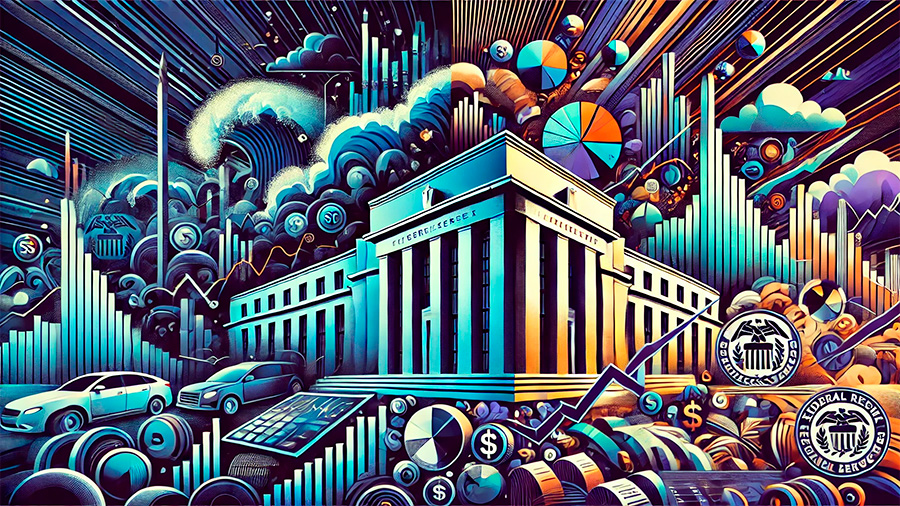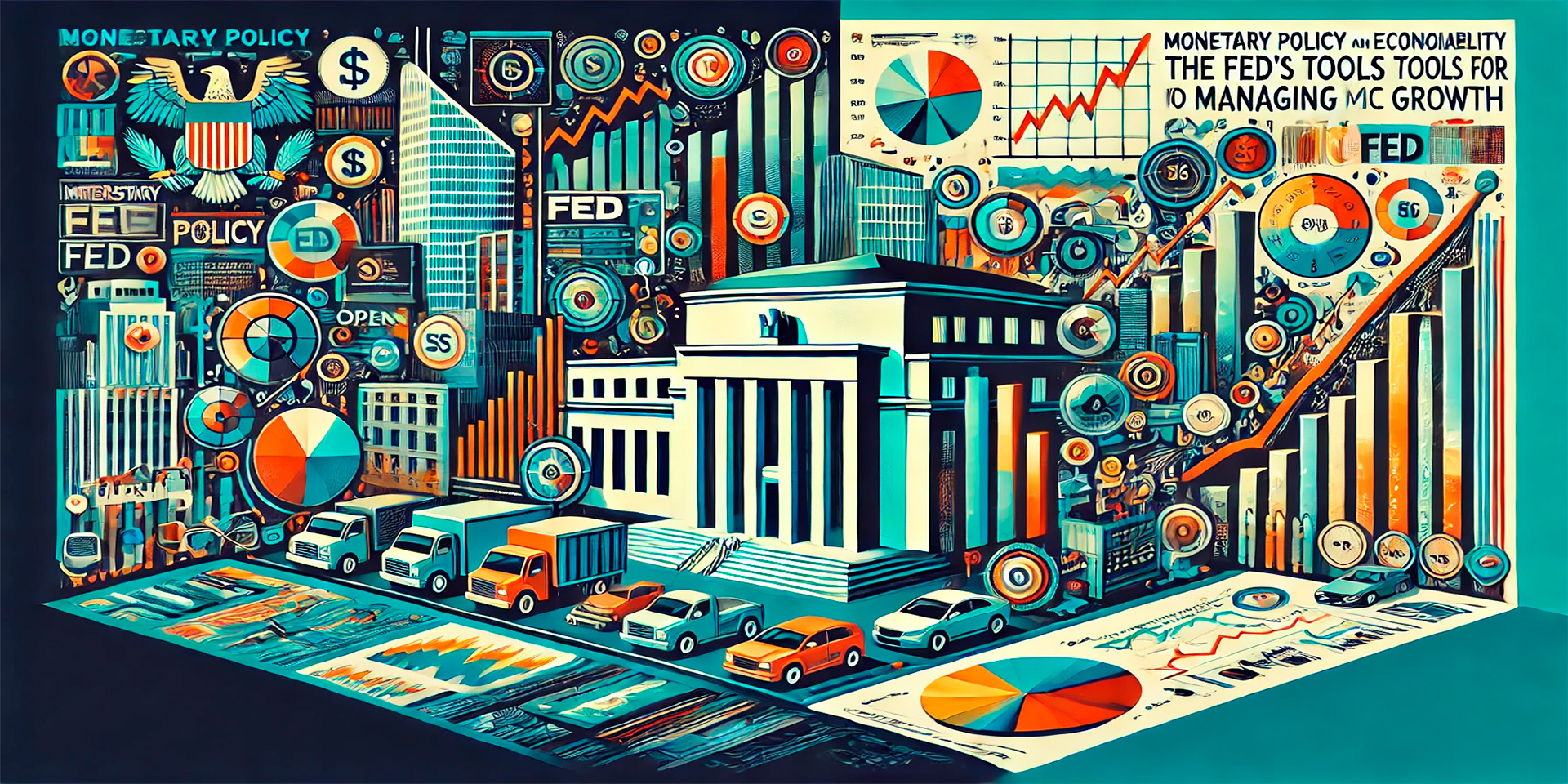The Federal Reserve (Fed) plays a pivotal role in maintaining the stability of the U.S. economy through its control over monetary policy. One of the Fed’s primary tools for ensuring economic stability is its ability to adjust interest rates, which in turn influences inflation, employment, and overall economic growth. By managing these factors, the Fed can help guide the economy through periods of recession and expansion, while aiming to maintain a balance that supports long-term economic health. This article delves into why the Fed’s monetary policy is critical to economic stability and how its decisions impact the broader economy.
Understanding the Fed’s Monetary Policy
Monetary policy refers to the actions taken by the Federal Reserve to control the money supply and influence economic activity. The Fed’s primary tools for conducting monetary policy include setting the federal funds rate (the interest rate at which banks lend to each other overnight), engaging in open market operations (buying or selling government securities), and employing other measures like quantitative easing.
The overarching goal of the Fed’s monetary policy is to maintain a stable economy by controlling inflation, promoting full employment, and fostering moderate long-term interest rates. By adjusting the cost of borrowing, the Fed can either stimulate economic growth or cool down an overheating economy, depending on current economic conditions.
Interest Rates and Economic Stability
One of the most significant aspects of the Fed’s monetary policy is its control over interest rates. Interest rates have far-reaching effects on both consumer behavior and business decisions, making them a powerful lever for managing the economy.
Low Interest Rates and Economic Growth
When the Fed lowers interest rates, borrowing becomes cheaper for both businesses and consumers. This reduction in the cost of borrowing encourages spending and investment, which can stimulate economic growth. Businesses are more likely to take out loans for expansion, new projects, or hiring additional workers when interest rates are low, while consumers may be more inclined to finance large purchases, such as homes or cars.
Low interest rates also reduce the return on traditional savings accounts, prompting individuals to invest in higher-risk assets like stocks, bonds, or real estate. This increase in investment activity can boost asset prices, further stimulating the economy.
During periods of economic downturn, such as a recession, the Fed often lowers interest rates to encourage spending and investment, helping to jump-start economic recovery. By making it easier for businesses and consumers to access credit, the Fed can provide a boost to demand, leading to job creation and increased economic activity.
High Interest Rates and Inflation Control
Conversely, when the economy is growing too quickly and inflation becomes a concern, the Fed raises interest rates to slow down borrowing and spending. Higher interest rates make loans more expensive, which reduces demand for credit and, consequently, curbs consumer spending and business investment.
By raising interest rates, the Fed aims to control inflation—the rate at which prices for goods and services rise. Inflation that is too high can erode purchasing power, reduce savings, and create economic instability. By making borrowing more costly, the Fed can reduce the overall demand in the economy, which helps to stabilize prices.
The ability to control inflation is critical to maintaining long-term economic stability. A stable inflation rate allows businesses to plan for the future, consumers to maintain their purchasing power, and the overall economy to grow at a sustainable pace. Without the Fed’s intervention through interest rate adjustments, unchecked inflation could lead to significant economic disruptions.

Impact on Employment and Job Creation
One of the Fed’s key mandates is to promote maximum employment. The Fed’s interest rate decisions have a direct impact on the labor market by influencing business investment, consumer spending, and overall economic activity.
Stimulating Job Growth with Lower Rates
When the Fed lowers interest rates, it stimulates job creation by encouraging businesses to invest in expansion and hiring. Lower borrowing costs make it more attractive for businesses to take out loans to finance new projects, purchase equipment, or open new locations. As businesses grow, they require more workers, which can lead to a decrease in unemployment.
Moreover, lower interest rates boost consumer spending, as individuals are more likely to make large purchases or invest in the stock market. Increased consumer demand translates to higher sales for businesses, further incentivizing them to expand their operations and hire additional staff.
Preventing Overheating and Maintaining Stable Employment
While lower interest rates can spur job growth, the Fed must also be cautious not to overstimulate the economy, which could lead to inflation and unsustainable levels of employment. When the economy grows too quickly, labor shortages can occur, driving up wages and increasing production costs for businesses. This, in turn, can lead to higher prices for consumers and contribute to inflationary pressures.
By raising interest rates when necessary, the Fed can prevent the economy from overheating and maintain a balance between job creation and price stability. Ensuring that employment levels are sustainable in the long run is crucial for maintaining economic stability, as rapid booms in employment can be followed by sharp downturns if inflation spirals out of control.
Monetary Policy and Financial Markets
The Fed’s monetary policy also has a significant impact on financial markets. Interest rate changes can influence everything from stock prices to bond yields, affecting both individual investors and large institutions.
Low Rates and Market Growth
When the Fed lowers interest rates, it reduces the returns on low-risk investments like savings accounts and government bonds. As a result, investors often seek higher returns by moving their money into riskier assets like stocks, corporate bonds, or real estate. This shift in investment can drive up the prices of these assets, leading to growth in financial markets.
Low interest rates also make borrowing cheaper for corporations, allowing them to take on debt to finance expansion, share buybacks, or dividends. This can lead to higher stock prices as companies grow and return value to shareholders.
High Rates and Market Corrections
On the other hand, when the Fed raises interest rates, the returns on low-risk investments increase, making them more attractive to investors. This shift can lead to a pullback in riskier assets like stocks, as investors move their money into safer investments with higher yields. As a result, stock prices may decline, and financial markets may experience periods of volatility.
Rising interest rates can also increase borrowing costs for companies, leading to reduced profitability and slower growth. This can contribute to market corrections, as investors adjust their expectations for corporate earnings and overall economic performance.
While higher interest rates can lead to short-term market volatility, they are often necessary to prevent asset bubbles and maintain long-term financial stability. By balancing interest rates, the Fed ensures that markets grow at a sustainable pace and are less prone to speculative excesses.

The Fed’s Role in Navigating Economic Crises
The Fed’s monetary policy is especially crucial during periods of economic crisis. During events like the 2008 financial crisis or the COVID-19 pandemic, the Fed plays a central role in stabilizing the economy and preventing further damage.
Quantitative Easing and Emergency Measures
In times of economic distress, the Fed often implements quantitative easing (QE)—the large-scale purchase of government bonds and other securities to inject liquidity into the financial system. By increasing the money supply and lowering long-term interest rates, QE encourages borrowing, spending, and investment during periods of economic contraction.
Additionally, the Fed can use emergency lending programs to provide liquidity to financial institutions and businesses facing cash flow problems. These measures help stabilize markets and prevent a complete collapse of the financial system during crises.
Rate Cuts and Stimulus Efforts
During economic downturns, the Fed typically cuts interest rates to near-zero levels to encourage borrowing and stimulate economic activity. These rate cuts are intended to make it easier for businesses and consumers to access credit, invest, and spend, which can help reverse the downward trend in the economy.
By acting quickly and decisively, the Fed can mitigate the effects of a crisis and help guide the economy toward recovery. However, the Fed must carefully balance its actions to avoid creating long-term inflationary pressures or other unintended consequences.
Conclusion: The Fed’s Role in Ensuring Economic Stability
The Federal Reserve’s monetary policy is a critical tool for maintaining economic stability in the U.S. economy. By adjusting interest rates, controlling inflation, promoting employment, and influencing financial markets, the Fed plays a central role in shaping the long-term health of the economy. Through careful management of monetary policy, the Fed helps ensure that the economy grows at a sustainable pace, avoiding both excessive inflation and recessionary pressures. Understanding the Fed’s influence on economic stability is essential for businesses, investors, and consumers looking to navigate the complexities of the financial system.
